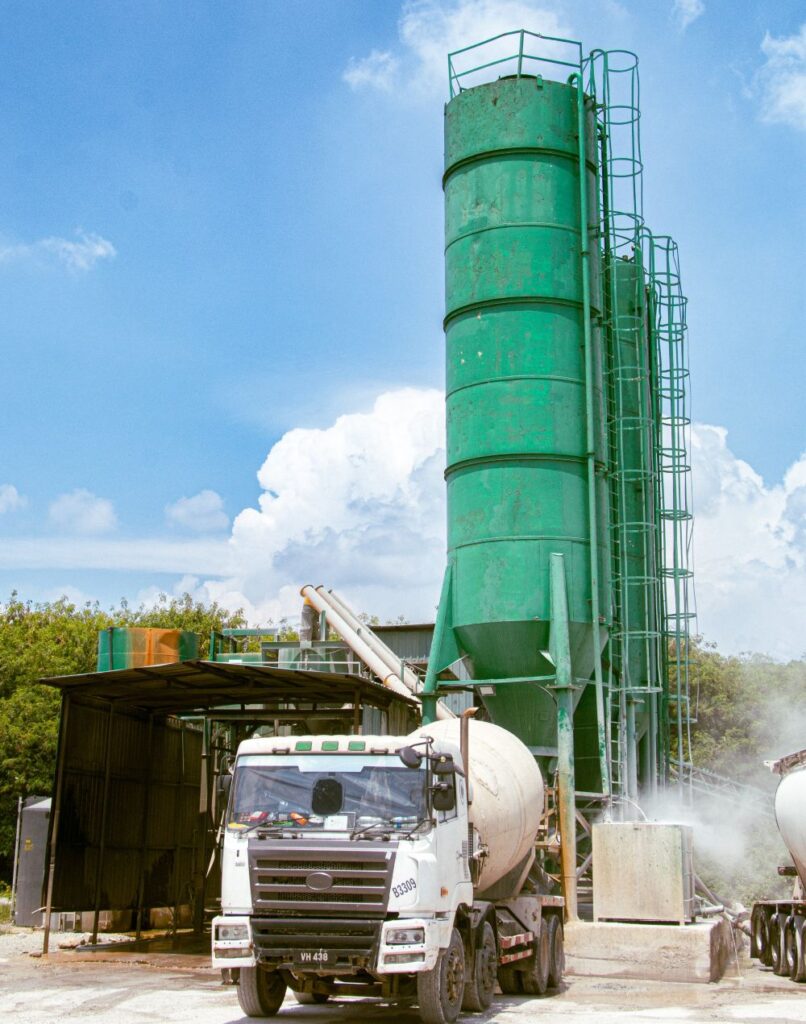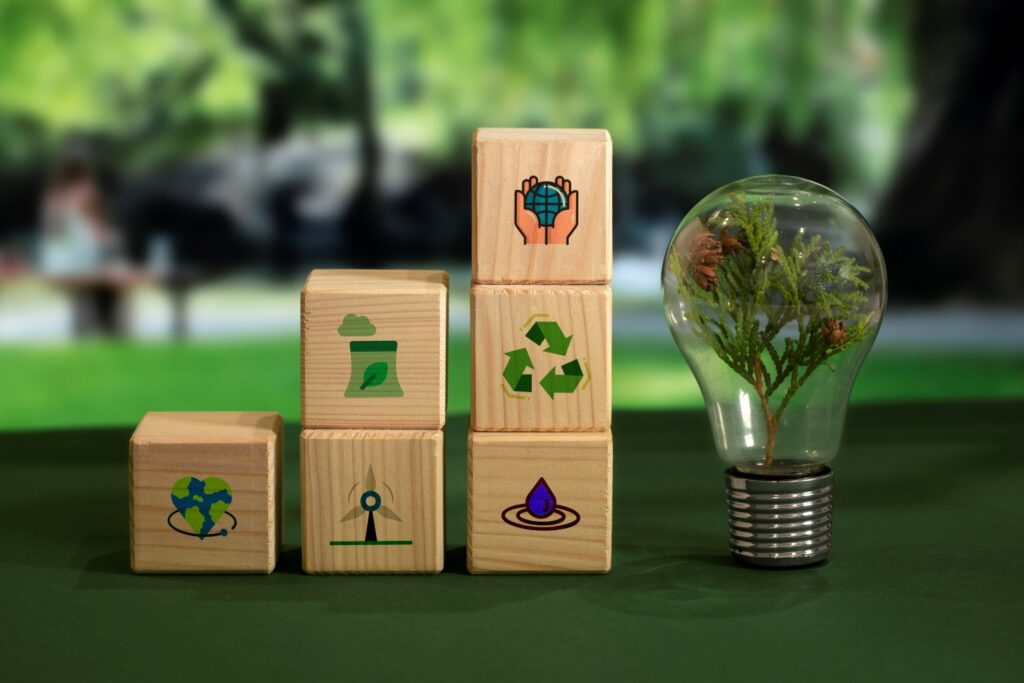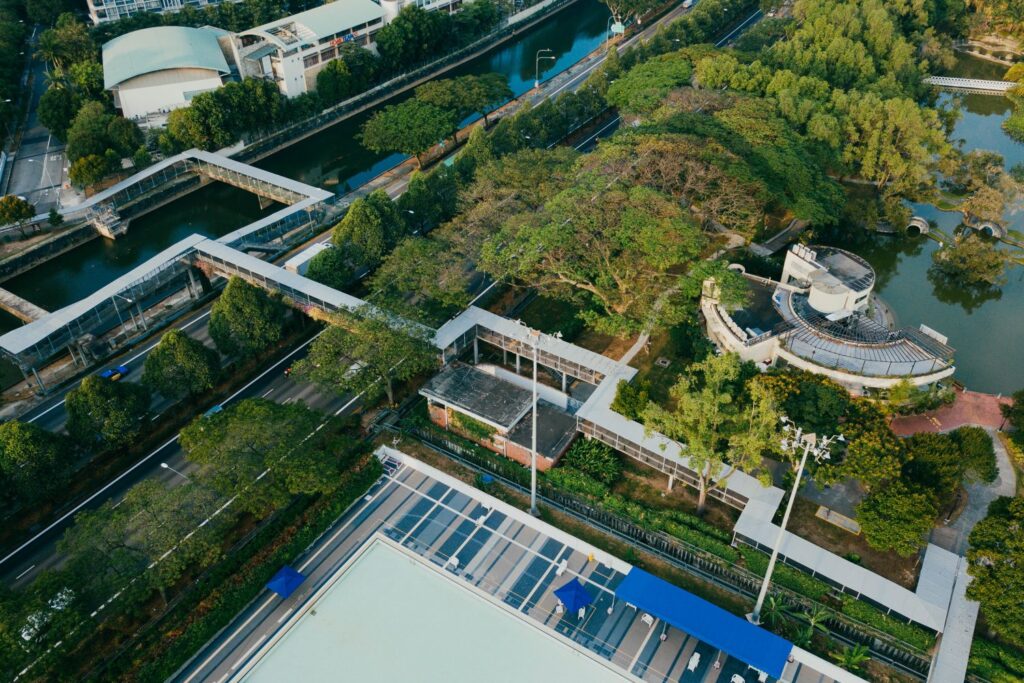Sustainability
Home - Sustainability
Rethinking Concrete for a Sustainable Tomorrow
Concrete is the foundation of modern infrastructure, yet its production is a major source of carbon emissions. In alignment with the Twelfth Malaysia Plan (12MP), which emphasizes environmental sustainability and green growth, it is crucial to rethink how we design and produce concrete. By adopting innovative approaches such as using industrial by-products, reducing cement content, and enhancing mix design efficiency, we can significantly cut emissions and support Malaysia’s climate goals.
Sustainable concrete isn’t just an industry trend; it’s a national responsibility. As Malaysia works toward net-zero emissions by 2050 and a 45% reduction in carbon intensity by 2030, green concrete plays a vital role. Cement, the key component of conventional concrete, accounts for nearly 8% of global carbon dioxide emissions, largely due to its energy-intensive production and chemical processes.

The Key to Low-Carbon Concrete
Low-carbon concrete is engineered to reduce its environmental impact while delivering the strength and reliability required in construction. It replaces high-emission materials and focuses on efficiency throughout the mix design process.
Partial replacement of OPC with:
- Ground Granulated Blast Furnace Slag (GGBS)
- Fly ash
- Silica fume
Improved mix efficiency to reduce water and cement usage
Use of recycled aggregates and alternative admixtures for enhanced performance
Lower heat of hydration, reducing thermal cracking in large pours

Key Benefits of Low-Carbon Concrete
Using low-carbon concrete supports long-term sustainability in both environmental and economic terms.
Advantage
- Significant reduction in CO₂ emissions
- Longer lifespan and enhanced durability of structures
- Lower maintenance costs over time
- Eligibility for green certification systems (LEED, MyCREST, GreenRE)
- Supports circular economy by reusing industrial waste
- Helps developers comply with ESG reporting standards
Overcoming Barriers of Low Carbon Adoption
While low-carbon concrete offers promising benefits for sustainable construction, the industry still faces several obstacles that slow its widespread adoption. Understanding these challenges is crucial to developing effective strategies that encourage greater acceptance and implementation of green concrete technologies.
Barriers include:
- Limited awareness and expertise among industry professionals
- Cost concerns versus perceived benefits and uncertainties over long-term performance
- Regional shortages of supplementary cementitious materials (SCMs)
- Hesitation to move away from traditional concrete mix designs


Advancing Sustainable Concrete in Malaysia
While there are challenges in materials, awareness, and initial costs, the benefits of long-term durability, environmental responsibility, and alignment with government policies far outweigh the barriers. The transition toward sustainable concrete is both urgent and necessary. It aligns with global sustainability goals and supports Malaysia’s commitment under 12MP.
To move forward:
- Promote collaboration between industry, academia, and government.
- Encourage R&D in low-carbon concrete and construction technology.
- Train contractors, engineers, and site staff in green practices.
- Integrate sustainability criteria in project tendering and design stages.
Low-Carbon Concrete in Malaysia’s Construction Landscape
Low-carbon concrete is transforming Malaysia’s construction sector, demonstrating versatility across diverse structural applications.
Applications Include:
- High-rise towers and landed residential projects
- Eco-friendly green townships and smart city developments
- Major civil infrastructure: MRT, LRT, highways, and drainage systems
- Industrial facilities aligned with Environmental, Social, and Governance (ESG) goals
- Public infrastructure emphasizing durability and long-term maintenance


Innovation & Leadership in Construction
Malaysia’s construction industry is evolving through a collaborative effort combining cutting-edge innovation, knowledge sharing, and supportive government policies.
- Localized trial mixes using advanced low-carbon additives
- Establishment of internal standards such as CERTIBUILD for low-carbon concrete
- Policy backing via the Green Technology Master Plan and the 12th Malaysia Plan (12MP)
- Increased sustainability requirements embedded in developer and GLC tender processes
Concrete Solutions for a Sustainable Malaysia
The journey toward sustainable infrastructure starts with rethinking the materials we use. Low-carbon concrete isn’t just an alternative it’s a strategic solution that supports Malaysia’s vision for environmentally responsible development. By embedding sustainable practices into every phase of construction, we can collectively reduce our carbon footprint and create a more resilient built environment.
As a trusted pioneer in eco-conscious concrete solutions, Ecolyte Group is proud to be at the forefront of this transition. With innovation, performance, and sustainability at the heart of our operations, we’re empowering builders, developers, and public stakeholders to construct with purpose. Together, we’re laying the foundation for a cleaner, smarter, and more sustainable Malaysia.

Your security matters.
Lorem ipsum dolor sit amet, consectetur adipiscing elit, sed do eiusmod tempor incididunt ut labore et dolore magna aliqua.
Lorem ipsum dolor sit amet
Lorem ipsum dolor sit amet, consectetur adipiscing elit, sed do eiusmod tempor incididunt ut labore et dolore magna aliqua.
